
Another Green World is the third solo studio album by Brian Eno, released by Island Records on November 14, 1975. The album marked a transition from the rock-based music of Eno's previous releases toward the minimalist instrumentals of his late 1970s ambient work. Only five of its fourteen tracks feature vocals, a great contrast to his past pop music material, which predominantly featured vocals in their recordings.
Ambient techno is a subgenre of techno that incorporates the atmospheric textures of ambient music with the rhythmic elements and production of techno. It was pioneered by 1990s electronic artists such as Aphex Twin, Carl Craig, The Orb, The Future Sound of London, the Black Dog, Pete Namlook and Biosphere.

Ambient 1: Music for Airports is the sixth studio album by Brian Eno, released in March 1978 by Polydor Records. It is the first of Eno's albums released under the label of ambient music, a genre of music intended to "induce calm and a space to think" while remaining "as ignorable as it is interesting". While not Eno's earliest entry in the style, it is credited with coining the term.

Selected Ambient Works Volume II is the second studio album by Aphex Twin, the pseudonym of British electronic musician Richard D. James. It was released by Warp in March 1994. Billed as a follow-up to James' debut Selected Ambient Works 85–92, the album differs in sound by being largely beatless ambient music. James claimed that it was inspired by lucid dreaming, and likened the music to "standing in a power station on acid."

Amber is the second studio album by English electronic music duo Autechre, released on 7 November 1994 by Warp. It was the first Autechre album to be composed entirely of new material, as their debut album Incunabula (1993) was a compilation of older tracks.

Ambient 2: The Plateaux of Mirror is a 1980 studio album by Harold Budd and Brian Eno. A work of ambient music, it is the second installment of Eno's Ambient series, which began in 1978 with Ambient 1: Music for Airports. Ambient 2 consists mainly of minimalist composer Budd playing improvisational piano in soundscapes produced by Eno. The album received positive reviews and lead to Budd and Eno collaborating again for the sonically similar The Pearl (1984).
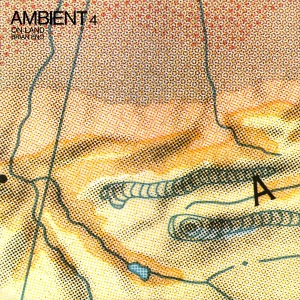
Ambient 4: On Land is the eighth solo studio album by Brian Eno, released in March 1982 by EG Records. It was the final edition in Eno's ambient series, which began in 1978 with the release of Ambient 1: Music for Airports. The album was released to critical acclaim, and is, along with the rest of the ambient series, recognised as a landmark album in the history of the ambient music genre.
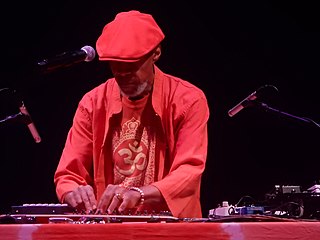
Laraaji is an American multi-instrumentalist specializing in piano, zither and mbira. His albums include the 1980 release Ambient 3: Day of Radiance, produced by Brian Eno as part of his Ambient series.
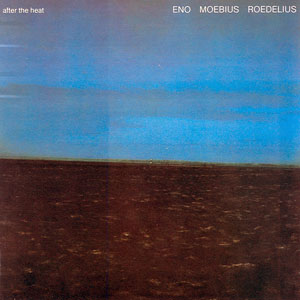
After the Heat is a 1978 album by Brian Eno, Dieter Moebius and Hans-Joachim Roedelius, credited to "Eno Moebius Roedelius". The album represents the second collaboration by the trio, the first being 1977's Cluster & Eno. As with the previous album, After the Heat was created in collaboration with the influential krautrock producer Conny Plank.
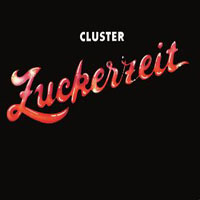
Zuckerzeit is the third studio album by German band Cluster, released in 1974 on Brain Records. It was co-produced by Michael Rother, their bandmate in side-project Harmonia. The music on Zuckerzeit marks a shift from Cluster's abrasive early work toward a more rhythmic, pop-oriented sound. Pitchfork ranked the album at number 63 on its list of the top 100 albums of the 1970s, while writer and musician Julian Cope included Zuckerzeit in his "Krautrock Top 50" list.

Fourth World, Vol. 1: Possible Musics is an album by Jon Hassell and Brian Eno. It was recorded at Celestial Sounds in New York City and released in 1980 by Editions EG, an imprint label of E.G. Records. "Fourth world music" is a musical aesthetic described by Hassell as "a unified primitive/futuristic sound combining features of world ethnic styles with advanced electronic techniques." Upon its release, the album received praise from a variety of critics.
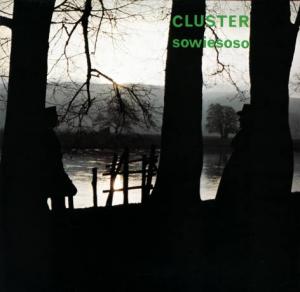
Sowiesoso is the fourth studio album by German electronic music band Cluster, released in 1976. It was Cluster's first release for Sky Records. Sowiesoso was recorded in just two days in Forst, Germany in 1976 and mixed at Conny's Studio in Wolperath.
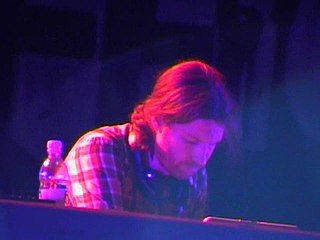
Richard David James, best known as Aphex Twin, is an Irish-born British musician, composer and DJ. He is known for his idiosyncratic work in electronic styles such as techno, ambient, and jungle. Journalists from publications including Mixmag, The New York Times, NME, Fact,Clash and The Guardian have called James one of the most influential and important artists in contemporary electronic music.

Brian Peter George St John le Baptiste de la Salle Eno, also known by the mononym Eno, is an English musician, composer, record producer and visual artist. He is best known for his pioneering contributions to the ambient music and electronic genres and for his work in rock, artistic pop and minimalist drone music. A self-described "non-musician", Eno has helped introduce unconventional concepts and approaches to contemporary music. He has been described as one of popular music's most influential and innovative figures. In 2019, he was inducted into the Rock and Roll Hall of Fame as a member of Roxy Music.

Small Craft on a Milk Sea is a 2010 album by British musician and record producer Brian Eno. The album—his debut with Warp—was released in Japan on 19 October 2010, in the United States on 2 November, and the United Kingdom on 15 November. The album was recorded with collaborators Jon Hopkins and Leo Abrahams in 2009 and 2010 and was released in several formats, including Compact Disc; digital download; a box set featuring the album on Compact Disc, vinyl, and download, a bonus CD with four extra tracks, and a lithograph by Eno; and another box set with all of the previous media and a 12" square silkscreen print by Eno and a copper plate.

R Plus Seven is the sixth studio album by American electronic musician Oneohtrix Point Never, released on September 30, 2013, as his debut album on Warp Records. The album's musical palette draws heavily on the synthetic sounds of MIDI instruments, 1980s synth presets, and VSTs.

The Ship is the twenty-sixth solo studio album by Brian Eno, released on 29 April 2016 on Warp Records. Announced on Eno's website on 24 February 2016, it was Eno's first solo album to contain vocals since 2005's Another Day on Earth. The Ship debuted at number 28 on the UK Albums Chart and is the second highest-charting solo album of Eno's solo career The album received critical acclaim.

Reflection is the twenty-seventh solo studio album by Brian Eno, released on New Year's Day 2017 on Warp Records. It is a piece of generative ambient music produced by Eno, which plays indefinitely via an app, modulating its output at different times of the day. A pre-recorded version of the album is available on CD and vinyl, which runs for 54 minutes. Digital streaming versions of the album update on a seasonal basis. It was nominated for the 2017 Grammy Award for Best New Age Album and was released to a positive acclaim by critics.

Neighborhoods is the only studio album from American musician Ernest Hood, self-released in 1975. It is a work of ambient music that explores the soundscapes of Portland, Oregon suburbia through a collage of field recordings layered with Hood's zither and synthesizer melodies. Only one thousand copies were pressed during its original production run. After remaining in obscurity for over 40 years, it was reissued by Freedom to Spend in 2019.
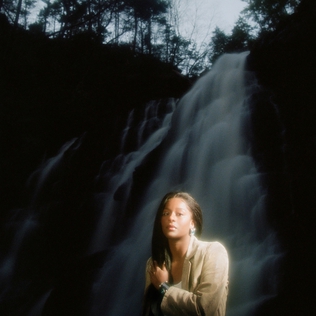
Fatigue is the second record by Brooklyn-based experimental musician Taja Cheek, under the moniker of L'Rain. It is her first recording with record label Mexican Summer. Fatigue builds on Cheek's experimental compositional approach, drawing from an eclectic collection of genres and employing field recording elements. Instrumentally, it has help from twenty collaborators, who lend the record clavinet, saxophone, and more.





















